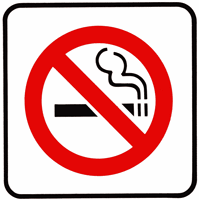 Today, it’s widely agreed that tobacco is highly addictive and linked to a long list of diseases.
Today, it’s widely agreed that tobacco is highly addictive and linked to a long list of diseases.
It wasn’t always so. Come with me down memory lane.
15th century
- Christopher Columbus brings tobacco back to Spain.
- Romanus Pane publishes first account of the use of tobacco (named after the island Tobago where it grew widely) among native people.
- Medicinal use: “relieve extreme fatigue and other ailments”
16th century:
- Expanding medicinal uses in Europe: asthma, ringworm, bruises, wounds, and epilepsy
17th century
- First protests over tobacco use
- King James I of England believes it’s toxic and proposes taxing tobacco to control its use.
- He stopped his criticism when he recognized the benefits to the treasury.
- Snuffing tobacco becomes a sinful act when Pope Urban VIII threatens excommunication.
- Pope Innocent XII adds smoking as an excommunicable offense.
- Russian law dictated cutting off the nose of snuffers.
18th century
- People tend to despise or praise it.
- The medical view: those who are phlegmatic might benefit, but its pernicious in those who are lean with hectic constitutions
19th century
- Concern over the negative effects of tobacco grow as younger Americans take to smoking.
- Doctor-led anti-tobacco campaigns emerge but are thwarted by other doctors who report tobacco “cures.”
- Scientific American warns about tobacco’s poisonous effects.
- The Merck Manual of the Materia Medica recommends tobacco to treat asthma and nymphomainia (“so as to cause nausea; effectual but depressing”)
20th century
- American tobacco companies go on the offensive with direct to consumer advertising of doctor-supported reports on the benefits of smoking
The rest you know.
Thanks to Serggio Lanata from the University of South Florida College of Medicine for the review, which was published in Seminars in Integrative Medicine.
1/15/07 16:28 JR